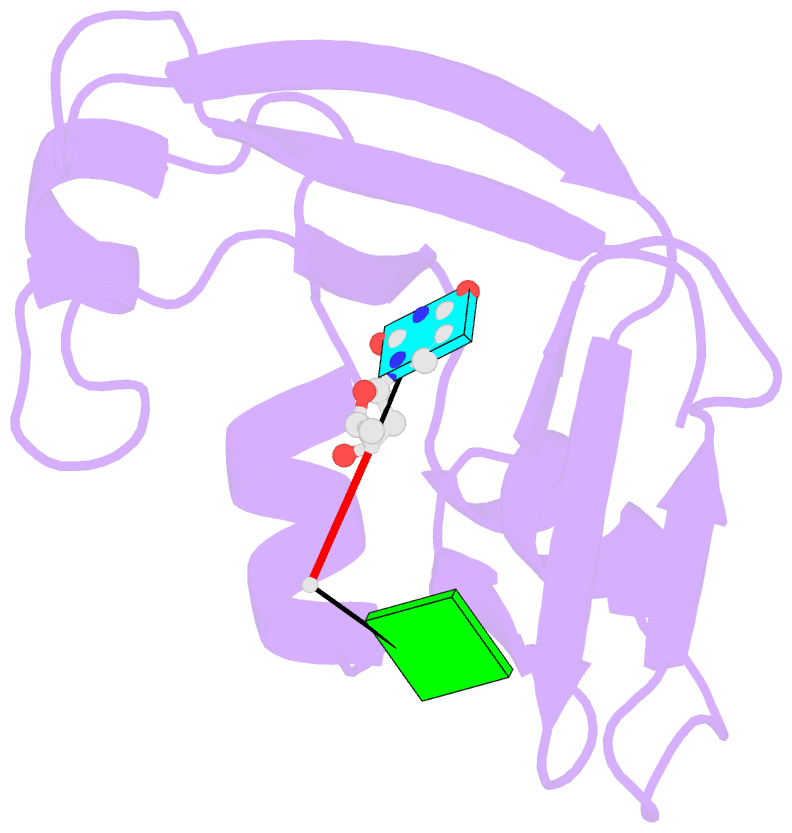Summary information and primary citation
- PDB-id
- 2i5s; SNAP-derived features in text and JSON formats;
DNAproDB
- Class
- hydrolase-DNA
- Method
- X-ray (1.9 Å)
- Summary
- Crystal structure of onconase with bound nucleic acid
- Reference
- Lee JE, Bae E, Bingman CA, Phillips Jr GN, Raines RT (2008): "Structural basis for catalysis by onconase." J.Mol.Biol., 375, 165-177. doi: 10.1016/j.jmb.2007.09.089.
- Abstract
- Onconase (ONC) is a homolog of bovine pancreatic ribonuclease (RNase A) from the frog Rana pipiens. ONC displays antitumoral activity and is in advanced clinical trials for the treatment of cancer. Here, we report the first atomic structures of ONC-nucleic acid complexes: a T89N/E91A ONC-5'-AMP complex at 1.65 A resolution and a wild-type ONC-d(AUGA) complex at 1.90 A resolution. The latter structure and site-directed mutagenesis were used to reveal the atomic basis for substrate recognition and turnover by ONC. The residues in ONC that are proximal to the scissile phosphodiester bond (His10, Lys31, and His97) and uracil nucleobase (Thr35, Asp67, and Phe98) are conserved from RNase A and serve to generate a similar bell-shaped pH versus k(cat)/K(M) profile for RNA cleavage. Glu91 of ONC forms two hydrogen bonds with the guanine nucleobase in d(AUGA), and Thr89 is in close proximity to that nucleobase. Installing a neutral or cationic residue at position 91 or an asparagine residue at position 89 virtually eliminated the 10(2)-fold guanine:adenine preference of ONC. A variant that combined such substitutions, T89N/E91A ONC, actually preferred adenine over guanine. In contrast, installing an arginine residue at position 91 increased the guanine preference and afforded an ONC variant with the highest known k(cat)/K(M) value. These data indicate that ONC discriminates between guanine and adenine by using Coulombic interactions and a network of hydrogen bonds. The structure of the ONC-d(AUGA) complex was also used to probe other aspects of catalysis. For example, the T5R substitution, designed to create a favorable Coulombic interaction between ONC and a phosphoryl group in RNA, increased ribonucleolytic activity by twofold. No variant, however, was more toxic to human cancer cells than wild-type ONC. Together, these findings provide a cynosure for understanding catalysis of RNA cleavage in a system of high medicinal relevance.





